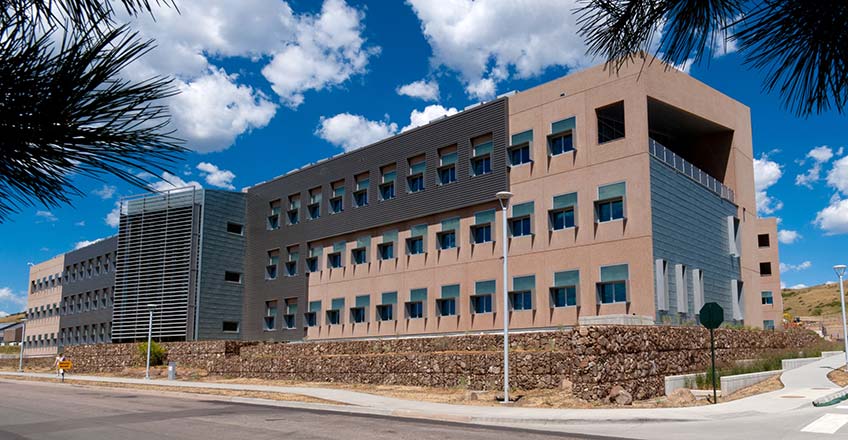Solar Process Heat Basics
Commercial and industrial buildings can use solar process heat technologies for space and water heating, ventilation, and space cooling to be more energy efficient.

NREL's Research Support Facility features a transpired solar collector. Photo by Dennis Schroeder, NREL
Space Heating
Many large buildings need ventilated air to maintain indoor air quality. In cold climates, heating this air can use large amounts of energy. But a solar ventilation system can preheat the air, saving both energy and money. This type of system typically uses a transpired collector, which consists of a thin, black metal panel mounted on a south-facing wall to absorb the sun's heat. Air passes through the many small holes in the panel. A space behind the perforated wall allows the air streams from the holes to mix together. The heated air is then sucked out from the top of the space into the ventilation system.
Water Heating
Solar water-heating systems are designed to provide large quantities of hot water for nonresidential buildings. A typical system includes solar collectors that work along with a pump, heat exchanger, and/or one or more large storage tanks. The two main types of solar collectors used for nonresidential buildings—an evacuated-tube collector and a linear concentrator—can operate at high temperatures with high efficiency. An evacuated-tube collector is a set of many double-walled, glass tubes and reflectors to heat the fluid inside the tubes. A vacuum between the two walls insulates the inner tube, retaining the heat. Linear concentrators use long, rectangular, curved (U-shaped) mirrors tilted to focus sunlight on tubes that run along the length of the mirrors. The concentrated sunlight heats the fluid within the tubes.
Space Cooling
Space cooling can be accomplished using thermally activated cooling systems driven by solar energy. Because of a high initial cost, thermally activated cooling systems are not widespread. The two systems currently in operation are solar absorption systems and solar desiccant systems. Solar absorption systems use thermal energy to evaporate a refrigerant fluid to cool the air. In contrast, solar desiccant systems use thermal energy to regenerate desiccants that dry the air, thereby cooling the air. These systems also work well with evaporative coolers (also called "swamp coolers") in more humid climates.
Additional Resources
Solar for Industrial Process Heat Analysis
Energy Saver: Active Solar Heating (U.S. Department of Energy)
Solar Ventilation Air Preheating (Whole Buildings Design Guide)
Opportunities for Solar Industrial Process Heat in the United States, NREL Technical Report (2021)
Share
Last Updated Aug. 27, 2025
